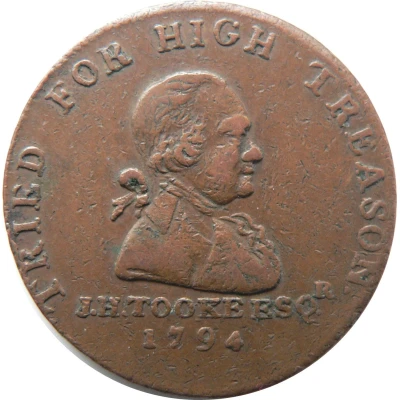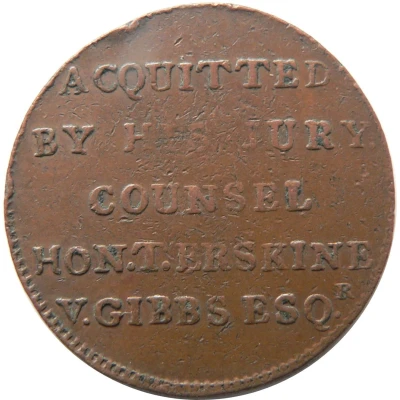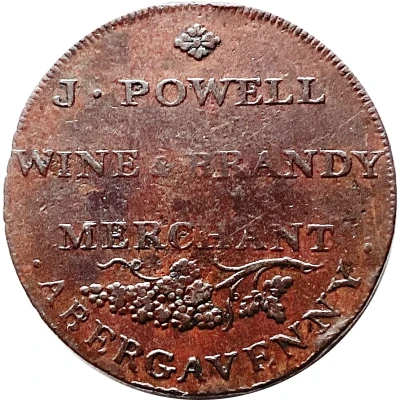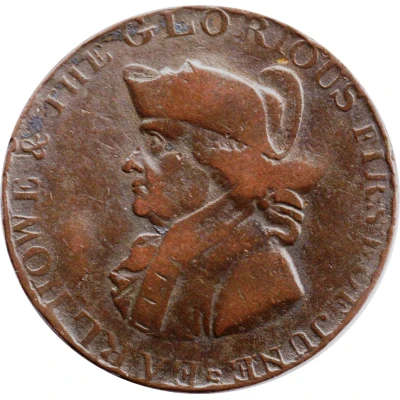
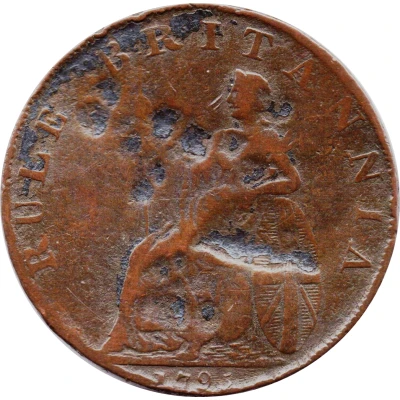

© numismaticroy
½ Penny Hampshire - Emsworth / J. Stride
| Copper | 10.26 g | 28.3 mm |
| Issuer | United Kingdom (United Kingdom, British Overseas Territories and Crown Dependencies) |
|---|---|
| Type | Token |
| Years | 1794-1795 |
| Value | ½ Penny (1⁄480) |
| Currency | Conder tokens (1787-1797) |
| Composition | Copper |
| Weight | 10.26 g |
| Diameter | 28.3 mm |
| Thickness | 2 mm |
| Shape | Round |
| Technique | Milled |
| Orientation | Coin alignment ↑↓ |
| Demonetized | Yes |
| Updated | 2024-10-09 |
| Numista | N#54539 |
|---|---|
| Rarity index | 87% |
Reverse
Seated figure of Britannia with spear and shield, legend around, date in exergue
Note: the spear does not touch R
Script: Latin
Lettering:
RULE BRITANNIA.
1795
Engraver: William Wyon
Edge
Incuse lettering
Lettering: EMSWORTH HALFPENNY PAYABLE BY IOHN STRIDE X
Comment
Admiral of the Fleet Richard Howe, 1st Earl Howe, KG (1726–1799) was a British naval officer. At the beginning of the American War of Independence, Howe was known to be sympathetic to the colonists. He had known Benjamin Franklin since late 1774 and was joined in a commission with his brother, General Sir William Howe, head of the land forces, to attempt a reconciliation.https://en.wikipedia.org/wiki/Richard_Howe,_1st_Earl_Howe#American_Revolutionary_War
The Glorious First of June of 1794 was the first and largest fleet action of the naval conflict between the Kingdom of Great Britain and the First French Republic during the French Revolutionary Wars. The British Channel Fleet under Admiral Lord Howe attempted to prevent the passage of a vital French grain convoy from the United States, which was protected by the French Atlantic Fleet, in the Atlantic Ocean, some 400 nautical miles (700 km) west of the French island of Ushant on 1 June 1794.
https://en.wikipedia.org/wiki/Glorious_First_of_June
Interesting fact
One interesting fact about the Token ½ Penny (Hampshire - Emsworth / J. Stride) 1794-1795 from United Kingdom is that it was issued during a time of severe coinage shortages in the late 18th century. The coin was minted by a private individual, J. Stride, and was used as a substitute for the official coins of the time, which were in short supply. This coin is an example of a "token" coinage, which was a common practice during this period where private individuals or businesses would mint their own coins to fill the gap left by the lack of official currency.
